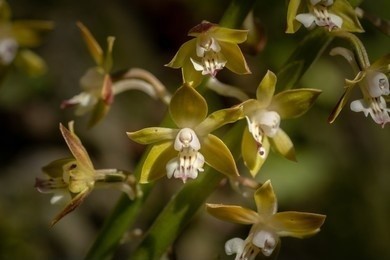Calanthe Plant Tissue Culture
Calanthe is a beautiful plant with the rich flower color and beautiful posture, which has high ornamental value and can also be used as a good potted plant and ground cover material. There are more than 120 species of Calanthe in the genus, mainly ground species and a few epiphytic orchids. It is widely distributed from South Africa and Madagascar to China, Korean Peninsula, Japan, Indonesia and Australia, and some islands in the South Pacific.
 Calanthe orchid, precious wild orchid
Calanthe orchid, precious wild orchid
We attach importance to the conservation and rational use of
Calanthe germplasm resources development.
At the same time, wild Calanthe also has some medicinal value. Modern research has found that Calanthe extract contains dihydrophenanthrene, indole glycosides, and some physiologically active alkaloids, which make it antibacterial, anti-inflammatory, and anti-toxin.
Calanthe seeds are extremely small and incompletely developed, with a very low germination rate under natural conditions and usually difficult to survive, while its horticultural ornamental and medicinal value is enormous, it has been over-harvested for many years, resulting in a decrease in wild Calanthe resources year by year. To protect this rare plant with both floral and medicinal uses, artificial breeding research is urgent, so Lifeasible has established a stable and efficient tissue culture system for Calanthe plants and can provide technical support for industrial development.
- Introduction of domestication and cultivation techniques
The method of plant division is simple and has a high survival rate, but it is difficult to ensure the quality of the plant by dividing it several times.
Calanthe seeds are small, with an underdeveloped seed embryo and no endosperm, containing only lipids as storage nutrients, and are difficult to germinate under natural conditions, so seed embryo culture is an effective way.
Rapid propagation by tissue culture service
Similar to other orchid species, Calanthe seeds have their germination inhibitors and are affected by various factors such as genetic factors, mechanical hindrance of the seed coat, and reduced vigor, which eventually lead to difficulties in natural reproduction. Lifeasible has improved the conditions of Calanthe tissue culture to overcome the problems that make Calanthe seeds difficult to germinate, such as fungicide lethality, nutrients in the culture medium, and temperature and light conditions of culture, and established a stable culture system.
- Selection of explants (related to the target material)
For Calanthe we recommend our customers to give preference to mature unopened capsules, immature capsules as explants to be provided to us for culture experiments.
Note: Please back up your experimental materials beforehand, and contact our staff immediately for an accurate response if you have any special needs.
- Commonly used culture media
1/2MS, MS medium, VW, Hyponex, etc.
- Frequently used exogenous hormones
6-BA, NAA, KT, IBA, etc.
Activated carbon, corn extract, potato extract, onion extract, banana extract, multivitamin, etc.
You want to sign a confidentiality agreement.
You have a specific plant species for your experimental needs.
You have a reliable and relevant cooperation project to discuss.
You are very interested in our project or have any questions.
You need an updated and detailed quotation.
For research or industrial use.

 Calanthe orchid, precious wild orchid
Calanthe orchid, precious wild orchid
